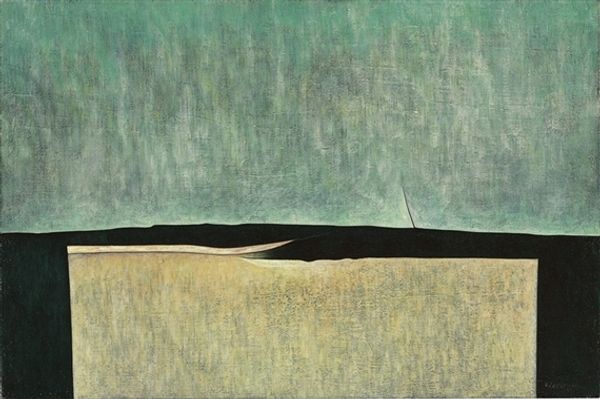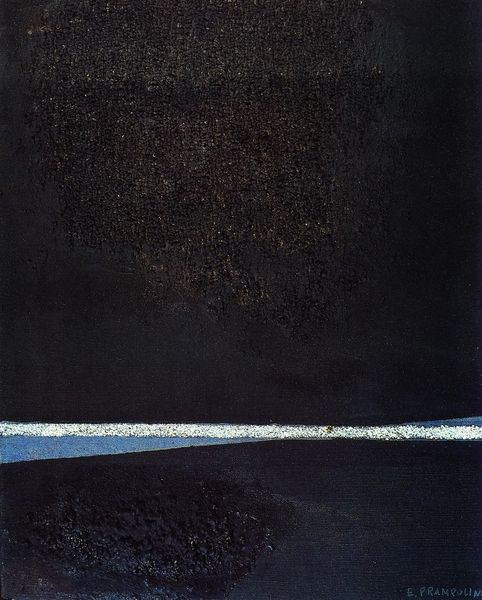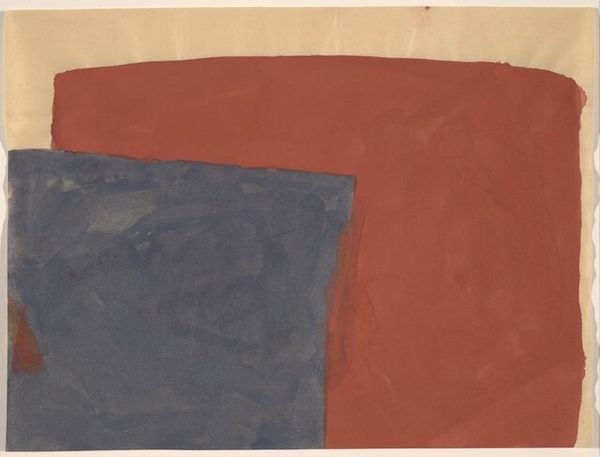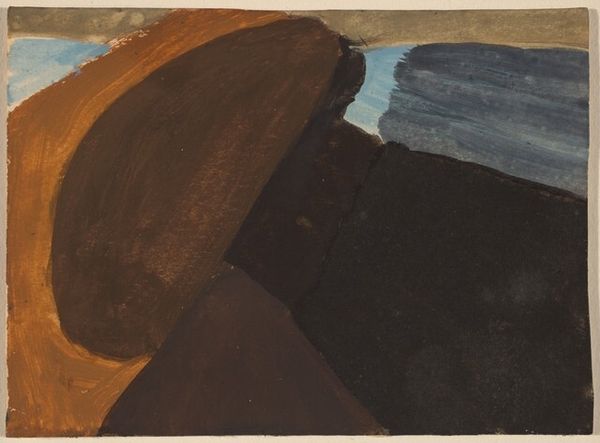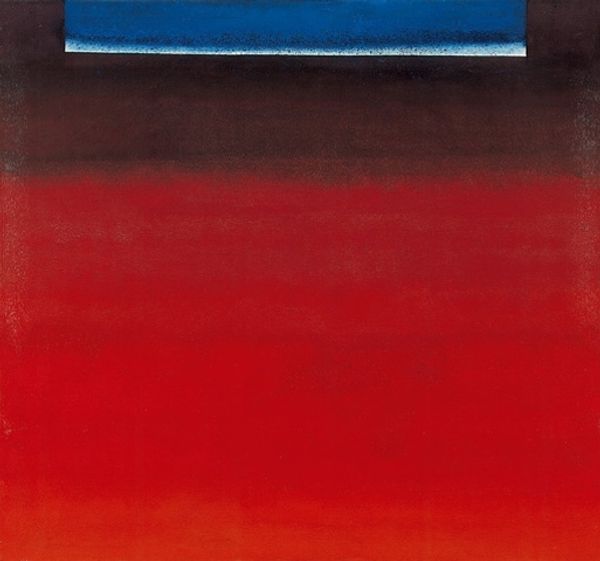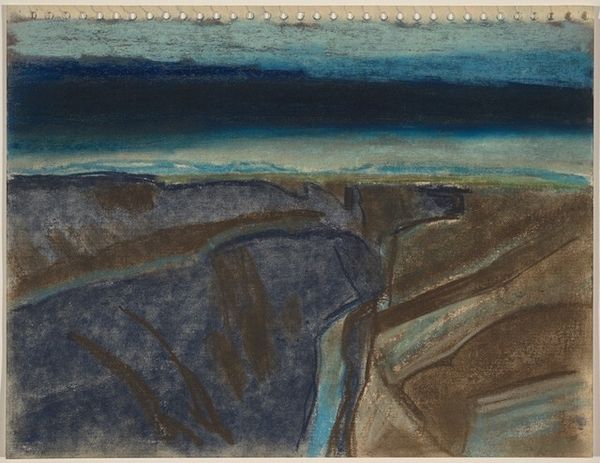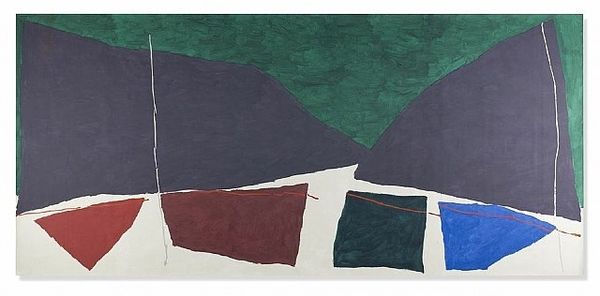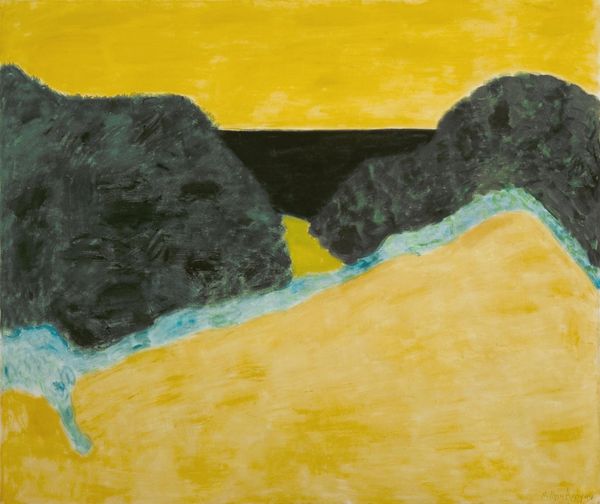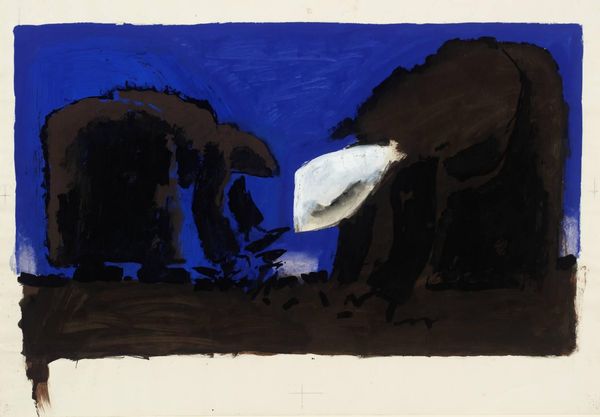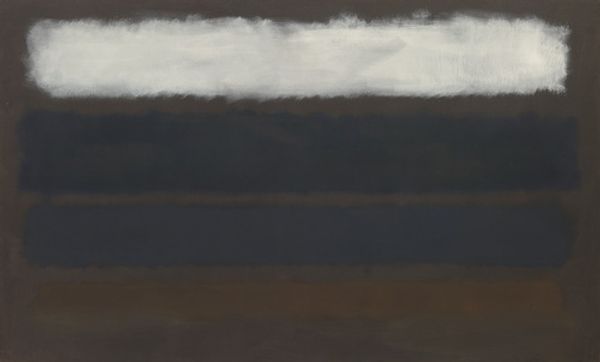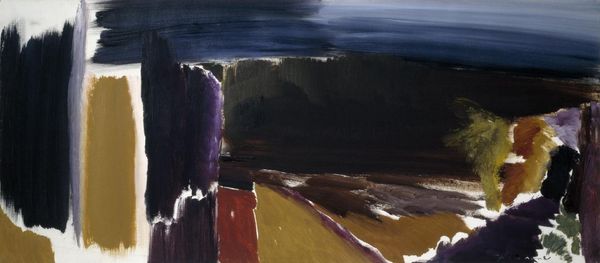
painting, acrylic-paint
#
acrylic
#
painting
#
acrylic-paint
#
oil painting
#
abstraction
#
modernism
#
hard-edge-painting
Copyright: Edward Corbett,Fair Use
Editor: Here we have Edward Corbett's "Washington D.C., January 1964 Number 4," made with acrylic paint. At first glance, it feels very grounded, almost like a landscape distilled to its most basic horizontal forms. How would you interpret its composition? Curator: Indeed. I observe the chromatic progression of the bands—each a variation within a predominantly cool palette. The geometric interplay between these flat, unmodulated expanses evokes a certain tension. The sharp, hard edges define their spatial relationship, almost aggressively. Do you notice the slight deviations within those apparently simple forms? Editor: I see some subtle, lighter lines, like scratches, across the darker sections. They add a bit of texture, and contrast with the large blocks of color. Is there any symbolic meaning? Curator: From a formalist perspective, symbolism is secondary. These linear elements disrupt the planar unity, introducing an almost gestural quality despite the painting's overall restraint. Consider how those lines create a visual rhythm, counterpointing the static horizontality. Is the work successful? Editor: I do agree the light scratches invite us to a slower look at the rest of the work. Overall, there is very little to work with here but the chromatic relationship makes for an active exchange between shapes. Curator: Precisely! Corbett challenges us to appreciate the expressive potential inherent in these seemingly minimal formal elements. It’s a fine exercise in observing how much can be achieved with so little.
Comments
No comments
Be the first to comment and join the conversation on the ultimate creative platform.
